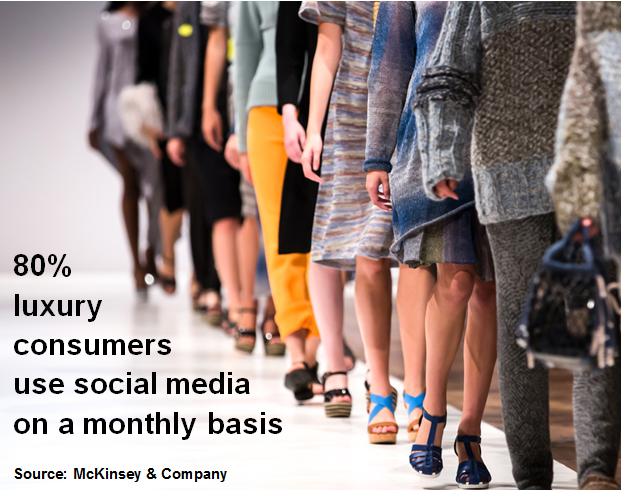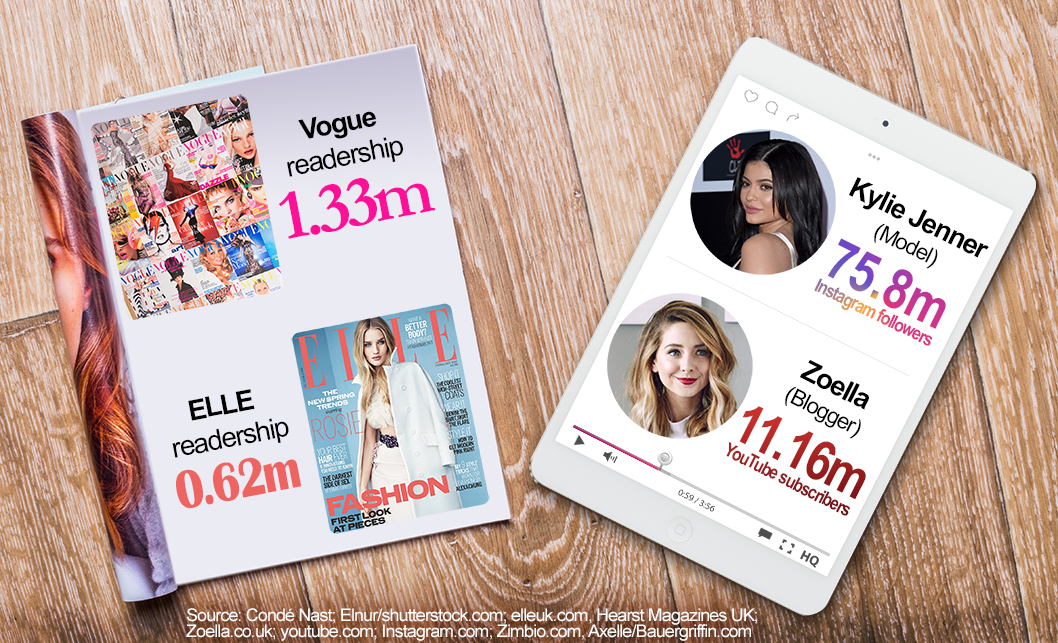In a previous post, we looked at some of the challenges faced by the luxury goods industry, including changing preferences (for experiences instead of ‘stuff’), a clampdown on bribery in China, and a slowdown in demand from some of the traditional big spenders (for example Russian and Chinese consumers).
Our final point raised the subject of the online world, and explained that, while brands have been slow to recognise the possibilities of digital, they are gradually starting to harness the opportunities on offer. This is what I’d like to focus on here.
Tap here to buy
Scepticism about whether big spenders would flash the cash online is being dispelled, with online sales of luxury goods forecast to triple to €70bn by 2025.[1]
After a decade of doubting e-commerce and seeing their sales fall, brands are now seeking to build their online presence. This is beneficial for those companies which can help luxury businesses adapt. One example is YOOX Net-a-Porter, which as well as selling luxury items online through its own site, also has a division which helps brands establish themselves online. It is now being frequently sought out to create websites, set up payment platforms and launch now standard retail capabilities such as ‘click and collect’.
See it, want it, buy it
The ability to sell online may no longer be enough. Certain brands are revolutionising the traditional fashion show and what that means for the product cycle.
Fashion shows are typically industry-only ‘closed door’ events with a lengthy (six-month) lead time between shows and collections being available to buy in-store. While digital media transformed these shows into powerful marketing events, brands were left unable to convert this buzz into sales for collections that hadn’t yet been produced.
Some are taking radical action. Take Burberry for example, whose ‘seasonless’ runway show at London Fashion Week last month brought a big change to the status quo. This saw the introduction of ‘see now, buy now’, slashing the time between a customer seeing the collection and buying it. This model enables customers to get their hands on what they see on the runway immediately after the show from the company’s flagship stores, on its website, and at select wholesale partners including Barneys New York.
 The company further opened its show to the public, broadcasting live over Facebook and offering live customer service on Facebook messenger, as well as forming partnerships with Snapchat and WeChat.
The company further opened its show to the public, broadcasting live over Facebook and offering live customer service on Facebook messenger, as well as forming partnerships with Snapchat and WeChat.
Burberry is not alone. Other brands such as Tommy Hilfiger, Tom Ford, Prada, Louis Vuitton and Ralph Lauren are also experimenting with this model. Nor is this practice unfamiliar, with some commentators noting the similarities between ‘see now, buy now’ in the fashion world and the way high-end consumer electronics businesses such as Apple launch products, with a big product launch event followed by selling new items in stores within the week. Nevertheless, the business model of luxury brands still remains far away from the short lead time model pioneered by Spanish clothing retailer Inditex, whose agility and flexibility enables the company to respond to fashion changes and alter production as necessary.
Happy and contented
Digital is not just changing how goods are purchased and paid for, it’s also shaping the entire shopping experience.
Luxury consumers are highly ‘social’ in the digital sense, with 80% using social media on a monthly basis and two in three generating their own social media content at least once a month.[2] Brands are not just creating their own promotional content on their social media channels, but their digitally empowered customers are doing it through their own accounts on the brands’ behalf.
Collaborations with social-media influencers and bloggers are another powerful marketing tool in an environment in which consumers are demanding more organic and personalised content. Brands will offer products, travel or tickets to events to ‘influencers’ with big social media followings in return for posts and endorsements. The numbers of followers and subscribers of these social media stars often far surpass traditional print media readership.
While the digital revolution in the world of luxury goods is unlikely to return sales to their heady heights, this is a trend brands simply can’t afford to ignore.
[1] Source: McKinsey & Company ‘Get wired for the ultimate luxury experience’: http://www.mckinsey.com/industries/consumer-packaged-goods/our-insights/is-luxury-ecommerce-nearing-its-tipping-point
[2] See footnote 1.
Any reference to a specific security, country or sector should not be construed as a recommendation to buy or sell this security, country or sector. Please note that holdings and positioning are subject to change without notice.







Comments